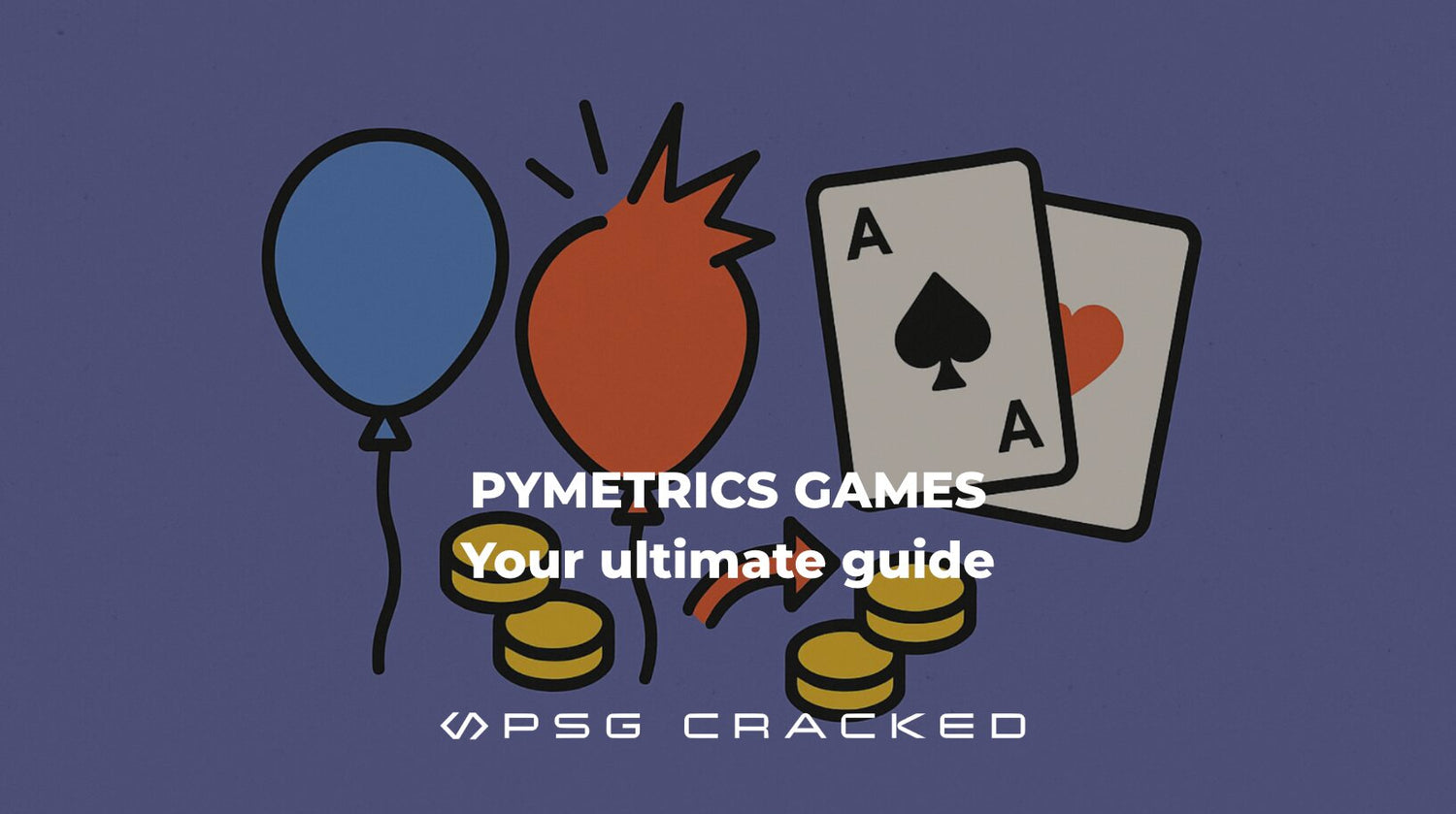
Tips for McKinsey Solve Game: practical advice for success
Published: – Last update:The McKinsey Solve Game is a challenging assessment that tests your ability to make quick, accurate decisions under pressure. For many applicants, it can feel overwhelming as the clock ticks down and the flood of data and tasks becomes difficult to manage.
Without the right strategy and preparation, what should be an opportunity to shine can quickly turn into a stressful experience.
But with the right approach, you can tackle the McKinsey Solve Game with confidence.
In this article, we share practical tips to help you navigate the game effectively, ensuring you will be better prepared to face the challenge and succeed it.
Notice these tips, since they are not specific for any of Solve mini-games, apply to all parts of the game. For specific insights about each of the Solve games, check our blog.
For simplicity, in the rest of this article we will be referring to the McKinsey Solve Game as Solve or Solve Game.
Now, let’s get down to the tips, presented in four areas.
Strategy tips
To succeed in Solve Game, you will want to approach it with the right strategy.
Here are three tips to help you facing Solve Game.
1. Answering correctly is the best choice
Solve can last between 70 and 110 minutes minutes and is demanding. Finding the right pace and allocating time to each task can be hard. Therefore, dedicate a reasonable amount of time to finding the best answer possible.
2. After answering correctly, focus on being fast
Of course, time is also important. After providing the correct answer, your priority is to be as fast as possible. Most of the times, Solve is presented as three games: Ecosystem Building and Redrock (35 minutes each), followed by Sea Wolf (30 minutes).
The second game, Redrock Game, has different phases, and in the end, you will need to answer questions (more about it here).
3. Filter data from the noise that is presented to you
Imbellus intentionally created the game to distract you with lots of data. It’s part of your job to filter what’s useful from all the information you receive.
If you focus on the wrong data, you’re more likely to provide an incorrect answer while wasting precious time (that you might not have).
An example of this: in the Ecosystem, the most important data you should pay attention to are calories needed, calories provided, elevation/depth and temperature ranges. These are the key facts you need to formulate your answers while others are just distractions.
4. Understand the three-game structure and adjust your pacing
With the addition of Sea Wolf, the Solve assessment now lasts 110 minutes and includes three games instead of two. The assessment now includes Ecosystem Building (35 minutes), Redrock (35 minutes), and Sea Wolf (30 minutes). Plan your energy and focus accordingly as Sea Wolf requires intense concentration for microbe selection and attribute management across three contaminated sites.
Hardware tips
While the strategy tips can be considered cornerstones of your effort, from which you should operate, some others can be strictly practical and straightforward.
These are the hardware ones.
Let’s see them.
5. A real mouse
Yeah, you read that correctly: using a mouse is a good move. Even if you might be so used to your notebook, especially Mac users, a real mouse will make your interactions with Solve faster.

Each time you drag, click, or move it you will be saving time. These fractions will compound and at the end, in 110 minutes, you might earn quite a bit of extra time to think.
6. Get a calculator
In all Solve mini-games, there will be a calculator on the screen that you can and should use (remember every click is considered in your evaluation).
However, having a real-solid calculator at your fingertips might be extremely helpful for quick and extra calculations. This is valid especially for Redrock Game.
Some applicants have reported that sometimes the game might become slow with a few glitches. It is an excellent idea to have a B-plan ready to go.
7. Remember numpads?
While getting a calculator might be super easy, finding a numpad in 2025 might be challenging. We know. But you are reading this to get the best tips to excel in Solve Game, right?
Numpads can speed up your calculations on the pc where you will do the game. You can get a real numpad, detached from any other device, or even a traditional keyboard that has it on the right side, like this in the picture:

This tip has a greater impact on Redrock Game, which requires more calculations.
8. A second screen or even a second pc
Another hardware tip is to consider using a second screen on your PC while playing the Solve Game. This will eventually favor researching or other kinds of needs you might have. Switching between screens might be bumpy and make you lose precious time.
Also, typically most applicants do the game from a notebook. Getting a second and bigger screen will allow you to see things clearer and in a more efficient way.
In some cases, having a second pc available can serve the same purpose as a second screen.
Skill tips
Another type of tip to consider in your Solve prep are the ones connected to your skills. You probably already have those in place, it’s more about fine-tuning in beforehand, when you have time.
9. Brush up your math
Of course, we all know math, but it’s a good idea to practice it with some intensity before doing the game.
Make yourself more comfortable with numbers by working with percentages, tables, probabilities, and basic calculations. The faster and more confidently you can do this, the better results you should expect in the Solve Game.
For Sea Wolf specifically, focus on averaging calculations and working with ranges. You'll need to ensure the average attributes of selected microbes fall within required ranges while managing desired and undesired traits. Practice quickly calculating averages of 3 numbers and determining if they fall within given ranges.
Think also about getting more acquainted with types of graphs: what they mean and what they are ideal for.
As a resource for you, check out our article about Redrock’s math.
10. Use a spreadsheet for Ecosystem and Sea Wolf games
Another great tip for your Solve prep is using a spreadsheet. Playing with that allows you to get acquainted with the game’s mechanics. Try different scenarios and challenge yourself!
You can do that by starting a brand-new spreadsheet in Excel, or you might also download our free templates, where you can jump-start your practice.
For Ecosystem Building: use our Ecosystem Excel Solver which automates the complex food chain calculations and helps you quickly identify sustainable ecosystem combinations. This will help you understand calorie requirements, species compatibility, and chain sustainability while building confidence through repeated practice scenarios.
For The Sea Wolf: this game requires managing complex microbe attributes, trait requirements, and averaging calculations across three contaminated sites. Consider using our specialized Excel Solver for Sea Wolf, which runs hundreds of combinations in milliseconds to find optimal microbe selections and helps you avoid the 20% penalties for attribute mismatches or trait violations.

Spreadsheets will give you a broader perspective of numbers and associations you need to have in place to be effective in the game.
11. Learn rules beforehand
This may sound obvious, but it’s vitally important: learn the rules of Solve games by heart. It will make your life so easier when you need to be accurate and fast.
Each game has its own structure and phases. Each phase has its own specifics. Know them well so that you will be ready to reply accordingly.
Behavioral tips
The last set of tips to do great in Solve Game is all about you. What decisions can you make that will improve your chances of acing the Solve Game?
12. Practice, practice, practice
Remember that popular rule of thumb of the 10,000 hours of practice, popularized by Malcolm Gladwell?
Well, you may not need 10,000 hours to master it, but spending time practicing is probably the single most effective way to prepare. Use your time wisely and practice everything we’ve listed above with solvers and simulators for all mini-games.
Practicing will give you the confidence to excel. When the Solve day arrives, it’s just a matter of taking a deep breath and putting into practice what you already know to do, but with slightly different numbers.
13. Look for updates
Since 2024, McKinsey has moved from randomly including Sea Wolf to making it a standard third game. Since January 2025, all candidates report having the Sea Wolf game, so prepare for all three games as part of your standard practice routine.
That’s why it’s important to keep yourself updated with different sources of information that cover the Solve Game, like YouTube videos, forums, and websites.
We also constantly update our blog area, with the most updated information, both with new articles and updating existing ones.
Acing the Solve test is within your reach
Ultimately, success in Solve isn’t just about what you know; it’s about how well you prepare and adapt.
Practicing will provide you confidence and knowledge to perform efficiently. Remember to stay updated on any changes to the game,
Approach the game with a clear strategy, a well-honed skill set, and the right mindset, and you'll be well on your way to acing the challenge.



